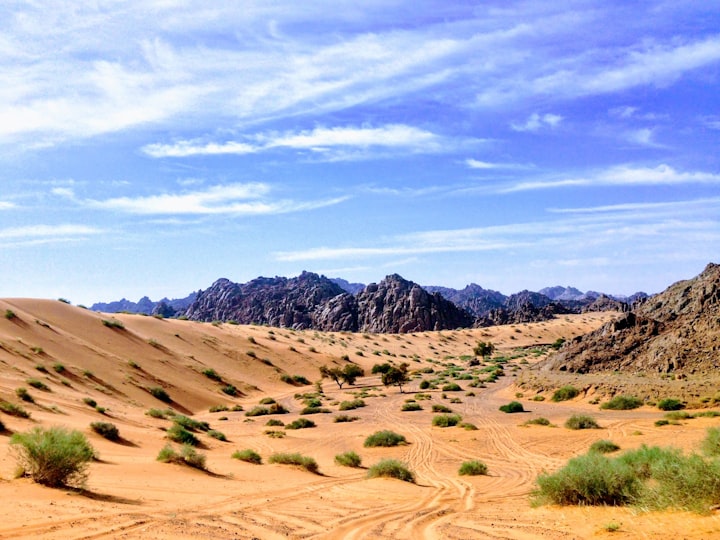When green, ancient Arabia drew early people from Africa
On the Arabian Peninsula, dry sand ridges stretch far into the distance. Nonetheless, another review recommends that these desert districts were once totally different.

On the Arabian Peninsula, dry sand ridges stretch far into the distance. Nonetheless, another review recommends that these desert districts were once totally different. It's logical they were green with plants. Researchers accept they pulled in early people and enormous creatures, for example, hippopotamuses moving out of the African mainland to remain at antiquated lakes.
Until 10 years prior, the Arabian Peninsula was a test. It was a clear right on the money the guide for researchers attempting to gain proficiency with the narrative of early human advancement and developments out of Africa. Advancement includes the progressions that occur in living things after some time.

Substantially more is thought about early human settlements in the Levant area. The Levant is a recorded term that alludes to the space east of the Mediterranean. It has been concentrated more. Today, that district incorporates the nations of Israel, Jordan, Lebanon and portions of Syria. They are in the Middle East, which incorporates a few nations in Africa and Asia. Archeological exploration has been done there for over 100 years. Through prehistoric studies, researchers find out with regards to mankind's set of experiences by burrowing and concentrating on what is found.
The Arabian Peninsula has not been a major piece of the tale of early human development. That is on the grounds that so little work was done there previously, said Michael Petraglia. He is a co-creator of the review. Petraglia is a paleolithic prehistorian at the Max Planck Institute for the Science of Human History in Germany. Paleolithic prehistoric studies is the investigation of early human culture. The review group included researchers from Germany, Saudi Arabia, Australia and somewhere else.
A tempest mixes in the sky over a desert.

Researchers began to search for stays in the district in the wake of seeing satellite pictures. These photos from shuttles gave indications of ancient lakes. Those spots are dry at this point. "Ancient" alludes to an antiquated period before set up accounts were kept.
"We saw tone themes made by antiquated lakes," said Huw Groucutt. He is likewise based at the Max Planck Institute. Sand ridges are somewhat orange, he said, and antiquated lakes look white or dark.
Uncovering more than 10 years diverted stone devices from various ancient times of early people. The most seasoned was 400,000 years prior. Tests of silt from the antiquated lakes and stays from hippos and different creatures were contemplated. Silt can incorporate particles conveyed by water and wind and afterward left behind. The particles can turn out to be essential for rocks over the long run. The investigations showed that in the far off past, the landmass had lakes and fields.
During these occasions with a great environment, early people and creatures were moving. They went from Africa into the Arabian Peninsula, the researchers said.
Environment Changes Caused Human Migration

Waterways and lakes, encompassed by prairies, would have drawn in creatures, said Petraglia. Then, at that point, the early people who chased creatures likewise would have come, he said. Hippos require all year water bodies a few yards (meters) profound to live. Stays of different creatures, including ostriches and gazelles, were found. They show an association with Africa, he said.
The examination bunch has consolidated paleohistory and environment records returning 400,000 years, said paleoanthropologist Rick Potts. Paleoanthropology is the investigation of the beginnings of people. It checks out fossils and other remaining parts safeguarded from before times. Potts coordinates the Human Origins Program at the Smithsonian's National Museum of Natural History. It is in Washington, D.C. He said the consolidated records show that early people got across the scene when the environment changed.






Comments
There are no comments for this story
Be the first to respond and start the conversation.